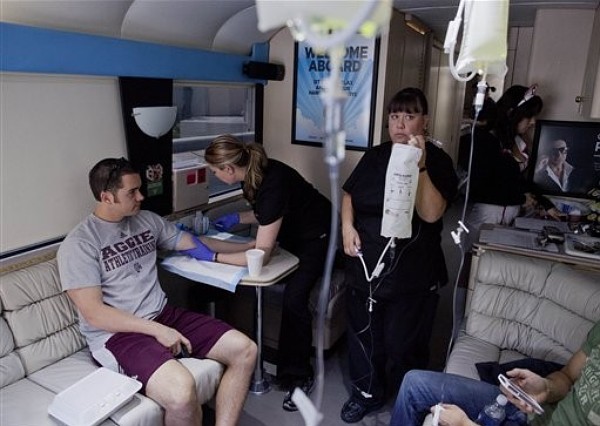
Why Was a 2.3% ‘Medical Excise Tax’ Showing Up on Receipts from Sporting Goods Giant Cabela’s?
Mike Opelka
January 1, 2013 brought a host of new taxes, fees, and charges to the American people. Some of them were anticipated. Others, like the Medical Device Excise Tax (MDET), were not — at least not in this way.
How so? Well, the MDET has started showing up on the receipts for purchases made at sporting goods giant Cabela’s. This receipt from one such store in Texas is making the rounds on the web. It shows an additional tax has been added to the purchase, after the local sales tax of nearly 10% was charged.

Image: Twitchy.com
A series of phone calls to both the corporate offices of Cabela’s as well as three Texas outlets where the taxes have been showing up yielded what appears to be a satisfactory explanation and resolution.
Customer service reps for Cabela’s stated the added tax was “a computer glitch that has been fixed.” In one case, a representative offered to take my receipt information over the phone and expedite a refund to my credit card. Cash purchases that were hit with the extra 2.3% tax must return to the store for a cash refund.
With that mystery solved, we couldn’t stop wondering about the tax. What is a Medical Excise Tax? Which devices will be affected by it?

Credit: AP
TheBlaze asked the people responsible for collecting the tax — the Internal Revenue Service (IRS). There is much information about this new tax on the IRS website. Let’s start with the obvious question, “What is it?”
Section 4191 of the Internal Revenue Code imposes an excise tax on the sale of certain medical devices by the manufacturer or importer of the device.
That’s the very first response from the IRS to the question about the tax. Based on that definition, it would seem that the mandated 2.3% tax should be charged to the manufacturer or importer and not the consumer. The IRS clearly states responsibility to pay the tax points to the maker and importer, but the word “generally” in their answer leaves wiggle room:
Generally, the manufacturer or importer of a taxable medical device is responsible for filing Form 720, Quarterly Federal Excise Tax Return, and paying the tax to the IRS.
Some tax experts say that adding the word “generally” may allow for the manufacturers and importers to pass that same 2.3% tax on to consumers through elevated prices at the retail level. At least one source at a major American manufacturer — who asked to remain anonymous because they’re not authorized to speak publicly on the matter — said the company will be forced to increase prices.
“If our profit margin is 4%, and we’re hit with an added 2.3% charge by this tax, more than half of our profit is instantly gone,” the company source said.
Looking deeper into the IRS clarification on this, we wondered what qualifies as a “medical device?” The IRS has guidance on that topic — sort of. Here’s the slightly confusing answer to the question, What is a taxable medical device?
In general, a taxable medical device is a device that is listed as a device with the Food and Drug Administration under section 510(j) of the Federal Food, Drug, and Cosmetic Act and 21 CFR part 807, unless the device falls within an exemption from the tax, such as the retail exemption.
Section 501 is a 23 page document filled with language that would confuse most folks, but then again, it allegedly applies only to commercial sales and importation of medical devices. The aforementioned “retail exemption” is a bit easier to grasp. Clarification on this issue is courtesy of the legal eagles at JDsupra.com:
There are two main categories of devices exempt from the tax. First, eyeglasses, contact lenses and hearing aids are specifically listed as being exempt. The second and broader category, commonly referred to as the “Retail Exception,” exempts a device which is “of a type which is generally purchased by the general public at retail for individual use.”
At the end of the day, the Medical Device Excise Tax was supposed to generate an additional $29 billion to help pay for Obamacare. During the deliberations of the 2009 law, the bill’s authors envisioned the $29 billion coming from “big companies” who made or imported the devices. More than one of the medical device manufacturers say that their operating profit margins are so thin, that they have no choice but to pass the cost on to consumers.
It appears that much of the $29 billion will be coming from the pockets of consumers.
(H/T: Twitchy.com)
